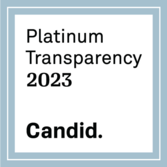Is Effluent Monitored & Tested?
Frequency of effluent testing is highly variable depending on the substance under investigation. In New Jersey, testing for toxins in effluent is performed quarterly (every 3 months) to once per permit cycle (every 4-5 years). For most priority pollutants, no regulations or limits exist for testing and monitoring. The only toxins that facilities test for each month are chlorine residuals or CPOs, but facilities do not have strict limits to follow. In addition, facilities test for the pathogen indicators fecal coliform and enterococci, yet only limits for fecal coliform exist. This is alarming, since the United States Environmental Protection Agency will require all states to monitor bathing beaches for enterococci. In addition, there are no limits for enterococci in wastewater, causing high levels of enterococci in some states’ effluent.
Although no discharge limitations exist for toxins and nutrients dumped into the ocean, New Jersey does provide Recommended Quantitation Levels (RQLs), which are merely recommended detection levels based on laboratory determinations. By no means are these levels designed to meet Water Quality Standards (WQSs), which are established to assure the quality of surface water is safe for human health and aquatic life. For example, for the toxin Benzidine, the RQL is 50 parts per billion, while the WQS is 0.000118 parts per billion. The obvious discrepancy demonstrates the need for a standard monitoring system for discharged toxins that can detect elevated levels of toxins in discharge zones and that establish limits that are designed to meet WQS.

